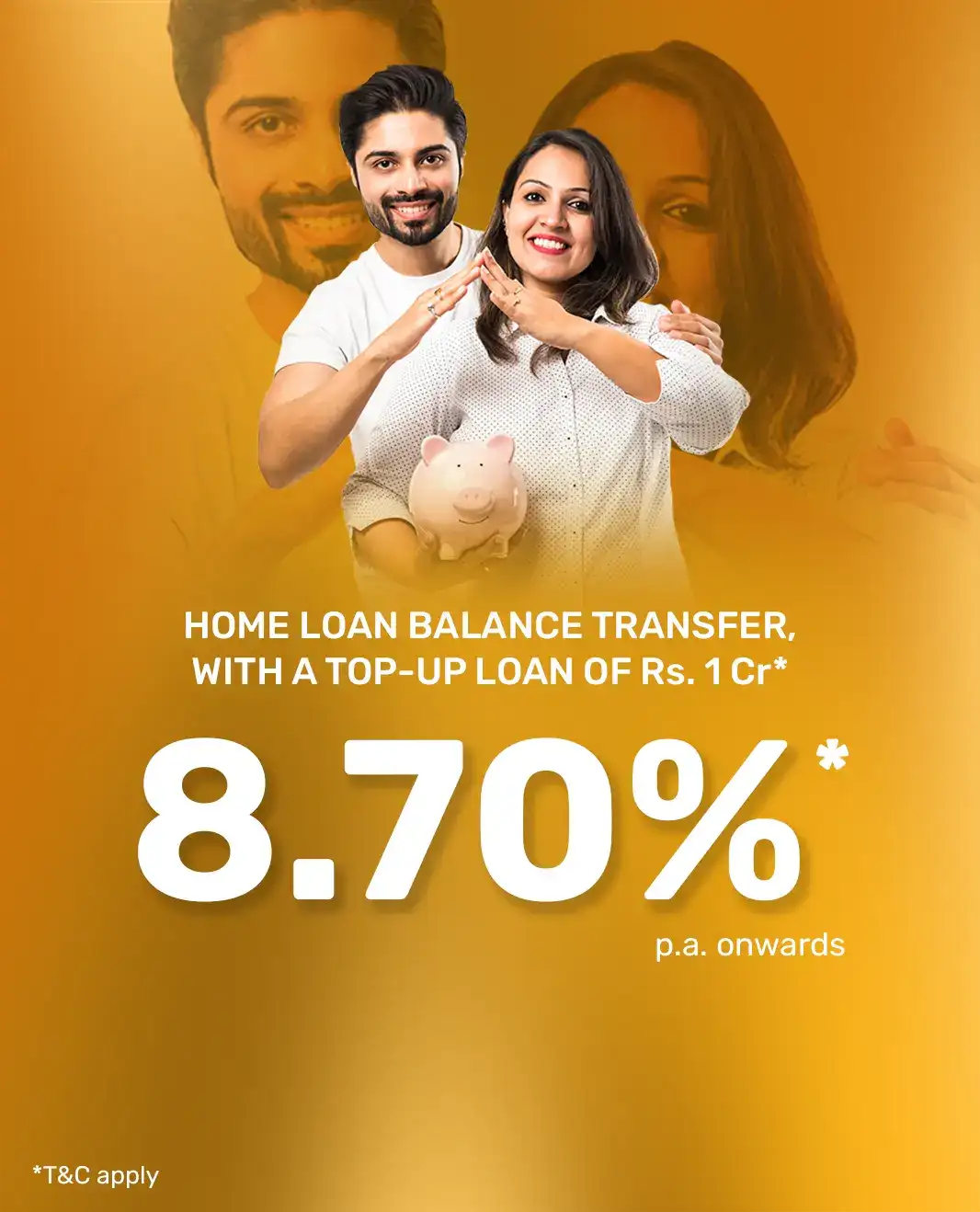Calculators
Editor’s Pick

HOME LOAN
How to Secure a Better Interest Rate on a Home LoanThe interest rate at which you repay your Home Loan is the most important aspect of your repayment process, seeing as it alone can determine how expensive or cost-effective the loan is.
09 Feb 2024 2 Min Read

HOME LOAN
Important Factors that Affect Your Home Loan Interest RateIt is important for aspiring borrowers to stay mindful of the factors that can influence the interest rate they stand to get on their Home Loans.
12 Feb 2024 2 Min Read

HOME LOAN BALANCE TRANSFER
How a Home Loan Balance Transfer WorksA Top-up Loan is a handy refinancing option for borrowers who already have an existing Home Loan and would now like to seek additional funding along with better lending terms on their ongoing Home Loan.
20 Feb 2024 3 Min Read

LOAN AGAINST PROPERTY
Process to Apply for a Loan Against PropertyKeeping up with multiple EMI payments is cumbersome and can cost you more than you may realise. Seeking a Loan Against Property with the intent to consolidate all your ongoing debt obligations is a cost-sensitive approach to servicing your debts.
27 Feb 2024 2 Min Read

HOME LOAN
EMI starting from Rs.733/Lakh*
-

From 8.50%*
per annum -

Loan Amount of Rs. 5 Cr*
-

Tenor of up to
40 years
Our offerings
Home Loan

- Starting 8.50%* p.a.
- Link your interest rate to the Repo Rate
- Loan amount of Rs. 5 Cr, or higher*
- Disbursal in 48 hours*
Home Loan Balance Transfer

- Reduce your interest rate to 8.70%* p.a.
- Avail of a Top-up worth Rs. 1 Cr* or higher
- Enjoy Flexi facility on your Top-up Loan
Loan Against Property

- Money in bank in 72 hrs*
- Ideal for business expenses
- Sizeable loan amount
- Minimal documentation
Home Loan for Professionals

- Tailored offers for CAs & Doctors
- Starting 8.60%* p.a.
- Link your interest rate to the Repo Rate
Online Home Loan

- EMI starting at Rs.733/Lakh*
- Instant approval
- In-Principal digital sanction letter in 10 min*
- Valid up to 180 days
FAQs See all
A Home Loan is a secured loan under which you borrow a sum to purchase or renovate a residential property. You borrow the amount at a predetermined interest rate for a given period of time and repay the sum with interest through EMIs.
You can apply for a Home Loan with Bajaj Housing Finance online or offline. To apply online, fill out our online application form and our representative will walk you through the documentation and verification process. If you prefer to apply offline, you can visit any of our branches PAN India.
About Bajaj Housing Finance Limited
Bajaj Housing Finance Limited is a 100% subsidiary of Bajaj Finance Limited — one of the most diversified NBFCs in the Indian market, catering to more than 80.41 million customers across the country. Headquartered in Pune, Bajaj Housing Finance Limited offers finance to individuals as well as corporate entities for the purchase and renovation of homes, or commercial spaces. It also provides loans against property for business or personal needs as well as working capital for business expansion purposes. The Company also offers finance to developers engaged in the construction of residential and commercial properties as well as lease rental discounting to developers and high-net-worth individuals. Bajaj Housing Finance Limited enjoys the highest credit ratings from CRISIL as well as India Ratings. The Company is rated AAA/Stable for its long-term debt programme and A1+ for its short-term debt programme from CRISIL and India Ratings.










































